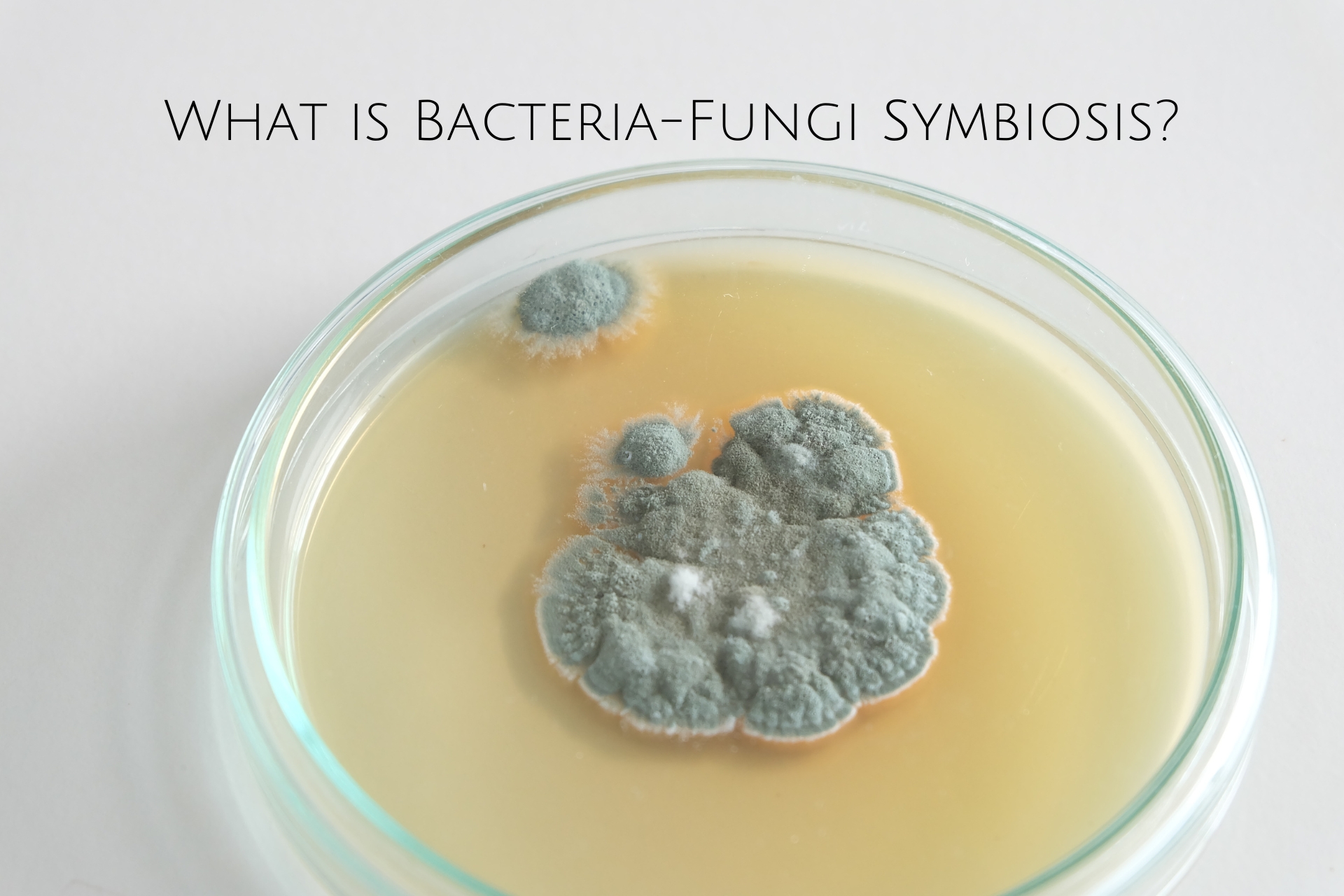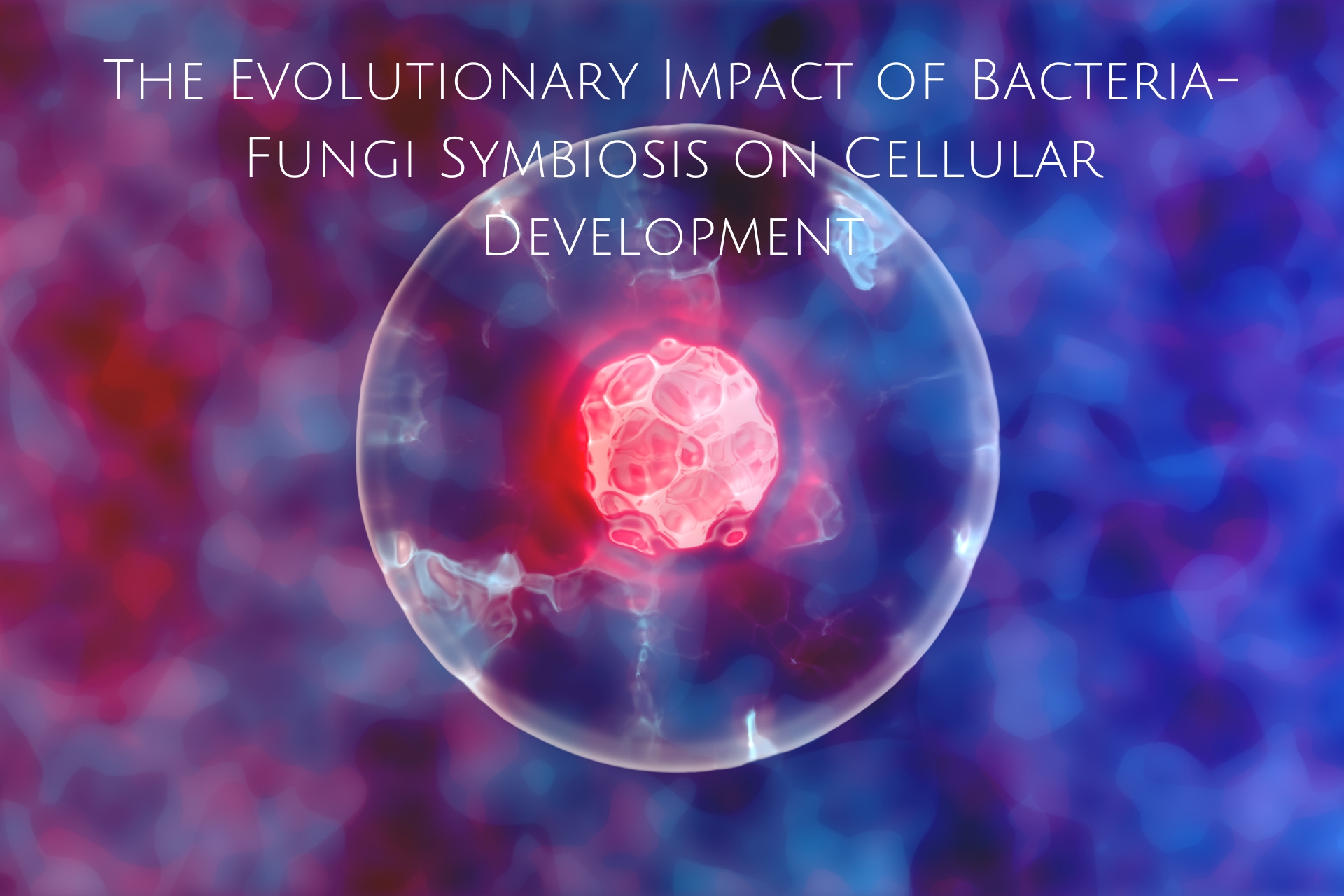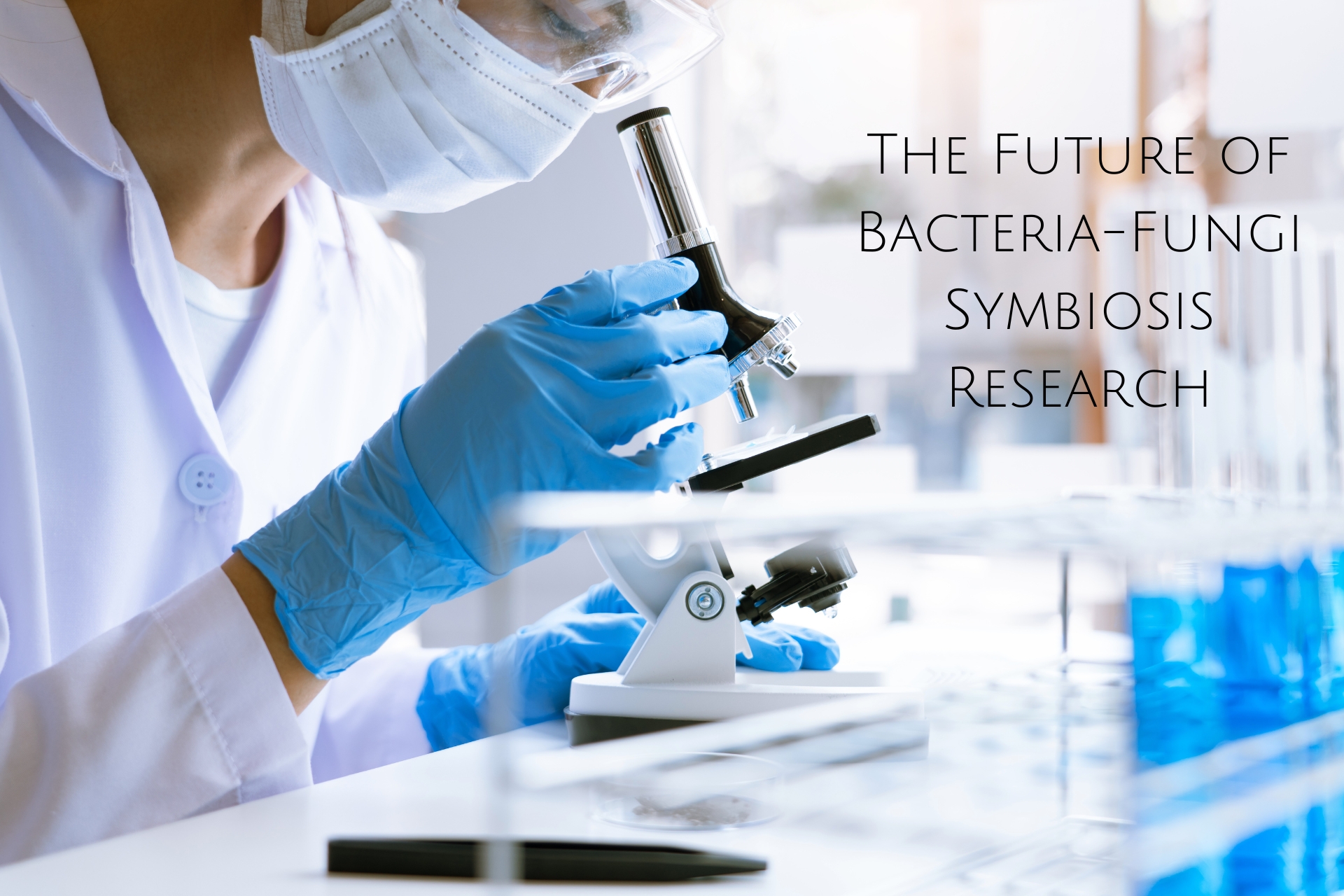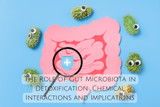Exploring the Evolutionary Role of Bacteria-Fungi Symbiosis in Cell Development
The intricate relationships between microorganisms have long fascinated scientists. Among these, the symbiotic partnership between bacteria and fungi stands out for its significant contributions to evolution, ecosystem dynamics, and cellular development. Over billions of years, bacteria-fungi symbiosis has played a crucial role in shaping the evolutionary path of life forms, influencing everything from cellular structure to complex metabolic processes.
In this blog, we’ll explore the evolutionary role of bacteria-fungi symbiosis, examining how these partnerships have driven cell development, enhanced ecological functions, and provided insights into the origins of life.
What is Bacteria-Fungi Symbiosis?

Symbiosis refers to the interaction between two different organisms that live together in close physical proximity. These relationships can be mutualistic (both organisms benefit), commensal (one organism benefits, and the other is unaffected), or parasitic (one organism benefits at the expense of the other).
In the case of bacteria-fungi symbiosis, these two distinct groups of microorganisms form close, often long-term relationships. Bacteria and fungi can coexist in various environments, from the soil and plant roots to the human gut, forming mutualistic partnerships where both organisms gain significant advantages.
For instance:
- Fungi benefit from bacteria by receiving essential nutrients or assistance in metabolizing complex compounds, such as nitrogen.
- Bacteria, in turn, gain protection from environmental stressors, access to additional resources, and sometimes the ability to degrade otherwise undigestible substances through the enzymatic capabilities of fungi.
This mutualistic relationship has persisted through evolutionary time and has likely shaped the development of complex cellular life.
The Evolutionary Impact of Bacteria-Fungi Symbiosis on Cellular Development

The co-evolution of bacteria and fungi has had profound implications for the development of cells, both prokaryotic (like bacteria) and eukaryotic (like fungi and animals). Over time, these microorganisms have influenced the emergence of more complex biological systems, including plants and animals.
1. Endosymbiotic Theory and Mitochondrial Origins
One of the most significant contributions of bacteria-fungi symbiosis to cell development is through the endosymbiotic theory, which posits that mitochondria (the powerhouse of eukaryotic cells) originated from free-living bacteria that entered into a symbiotic relationship with an ancestral eukaryotic cell.
The endosymbiotic theory suggests that an ancient eukaryotic cell engulfed a bacterium, and over time, this bacterium became an integral part of the host cell, evolving into the mitochondrion. This symbiotic relationship provided the host cell with enhanced metabolic capabilities, particularly in energy production (ATP synthesis), which was a pivotal step in the evolution of complex multicellular organisms.
Although this theory primarily focuses on the bacterial origins of mitochondria, the symbiotic relationship between bacteria and fungi has also contributed to the evolution of eukaryotic cells by influencing the metabolic and genetic interactions between them. Fungal cells have a similar endosymbiotic relationship with bacteria, helping to metabolize nutrients and providing further evolutionary advantages in certain environments.
2. Metabolic Diversification and Cooperation
The interaction between bacteria and fungi has played a critical role in expanding metabolic capabilities, a vital step in the development of both single-celled and multicellular organisms. Fungi and bacteria possess unique enzymatic systems that enable them to break down complex organic compounds. This symbiotic relationship has allowed these microorganisms to survive in diverse environments with varying nutrient availabilities.
For example, in soil ecosystems, bacteria can fix nitrogen, which fungi cannot do on their own. In turn, fungi break down organic matter and provide bacteria with essential organic compounds. This mutually beneficial partnership not only boosts survival but also fosters the diversification of metabolic pathways that drive the evolution of complex cellular functions.
The transfer of genetic material between bacteria and fungi (horizontal gene transfer) has also played a role in the evolution of new enzymatic capabilities, allowing both organisms to thrive in environments where they might otherwise not have survived.
3. Fungal Mycelia and Bacterial Biofilms
Another remarkable feature of bacteria-fungi symbiosis is the formation of biofilms by bacteria and mycelial networks by fungi. These complex structures are often found in environments where both organisms live together, and they serve as examples of cooperative behavior that enhance survival.
- Bacterial biofilms are colonies of bacteria that secrete extracellular polymeric substances (EPS) to protect themselves from environmental stresses like desiccation, toxins, and antibiotics. Biofilms also facilitate interspecies communication and nutrient exchange, enhancing bacterial survival.
- Fungal mycelia, which are extensive networks of thread-like cells (hyphae), provide structural support for fungi and allow them to explore large areas in search of nutrients. The interaction between fungal mycelia and bacterial biofilms creates a microhabitat where both organisms can thrive, share resources, and protect each other from environmental threats.
This symbiotic relationship is not just about survival—it's an evolutionary strategy that allows both organisms to adapt to complex and challenging environments, and it has influenced the development of multicellular organisms that rely on such cooperation for tissue organization and cellular differentiation.
Evolutionary Significance in Ecosystem Function
The partnership between bacteria and fungi is not limited to cellular development; it has also shaped ecosystem dynamics. Fungi and bacteria play crucial roles in nutrient cycling, decomposition, and plant growth, further supporting the evolutionary progress of life on Earth.
- Nutrient Cycling and Soil Health: Bacteria and fungi form a dynamic symbiosis in the soil, where they help break down organic matter into nutrients that plants can absorb. In turn, plants provide fungi with sugars, creating a closed-loop system that sustains ecosystems. This process is essential for maintaining soil health, which supports the growth of more complex organisms.
- Plant-Fungi-Bacteria Symbiosis: In some ecosystems, plants, fungi, and bacteria form a triadic symbiotic relationship. For example, in mycorrhizal relationships, fungi interact with plant roots, helping them absorb water and nutrients while bacteria break down organic matter to release these nutrients. This complex web of interactions has allowed plants to evolve specialized structures, such as roots, which were essential for the transition from aquatic to terrestrial life.
The Future of Bacteria-Fungi Symbiosis Research

The study of bacteria-fungi symbiosis continues to evolve, revealing new insights into cellular evolution, disease prevention, and biotechnology applications. Researchers are exploring how these symbiotic relationships can be harnessed for medical purposes—for example, by using beneficial bacteria and fungi to treat infections or manage chronic diseases.
Moreover, scientists are looking at synthetic biology to design engineered systems that mimic bacteria-fungi symbiosis, potentially leading to innovations in fields like drug production, agriculture, and environmental cleanup.
Conclusion

The evolutionary role of bacteria-fungi symbiosis in cell development is a testament to the power of cooperation in shaping life on Earth. From the origins of mitochondria to the diversification of metabolic processes, these partnerships have had a profound impact on cellular complexity and ecological stability. As science continues to unravel the depths of these relationships, we gain a greater understanding of how life on Earth has evolved and how we can use this knowledge to improve our health, environment, and technology.
In essence, bacteria-fungi symbiosis is not just a cornerstone of microbial life—it's a key piece of the puzzle in understanding the very origins and development of complex life forms.
Recent Posts
-
The Role of the HOMA Test in Assessing Metabolic Health
In today’s fast-paced world, where health conditions such as Type 2 diabetes, obesity, and metabolic
-
The Role of Omega-3s in Brain Health and Heart Disease Prevention
Omega-3 fatty acids are essential polyunsaturated fats that play a crucial role in maintaining overa
-
The Role of Gut Microbiota in Detoxification: Chemical Interactions and Implications
The human gut is home to trillions of microorganisms collectively known as the gut microbiota. These





